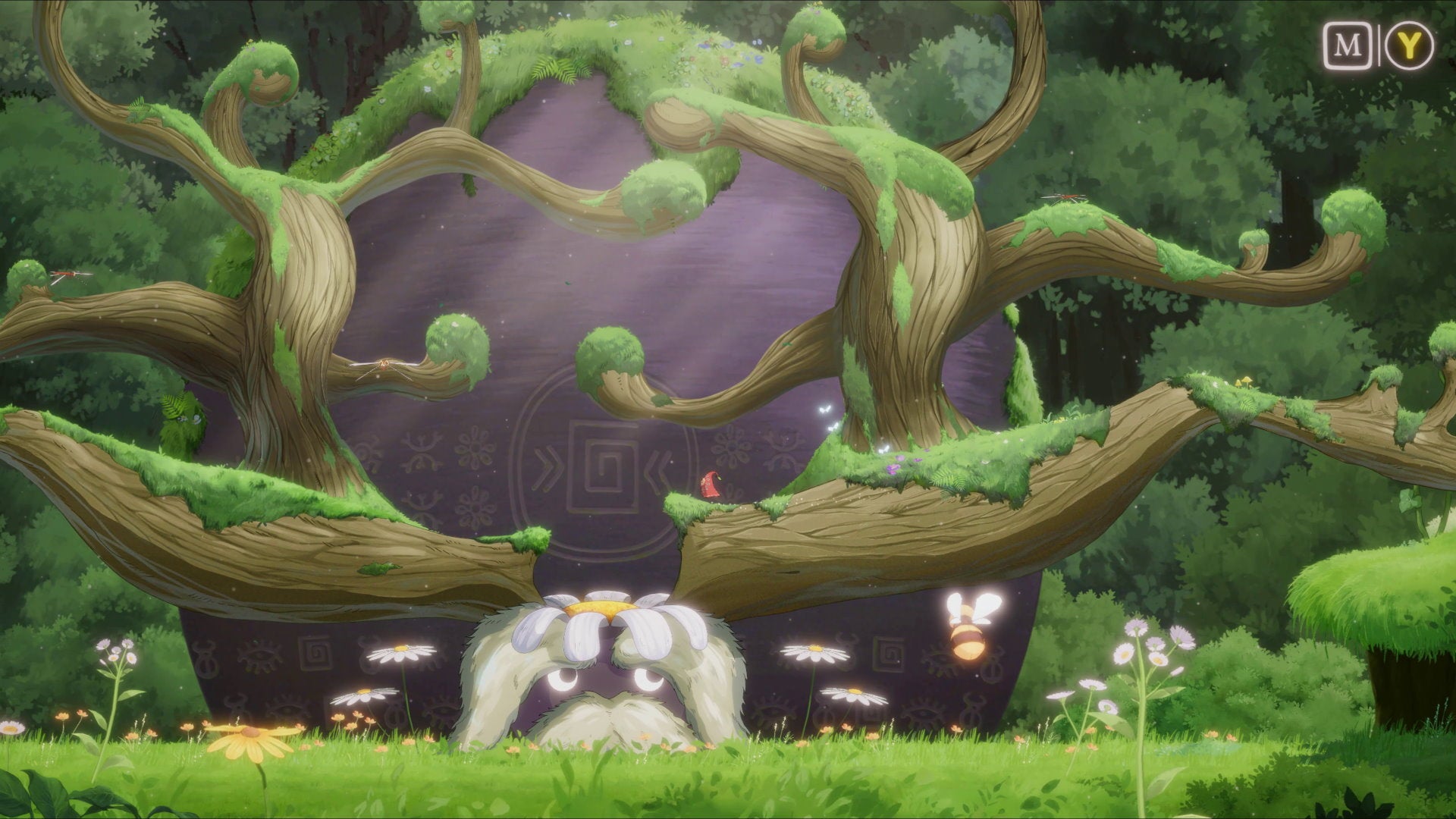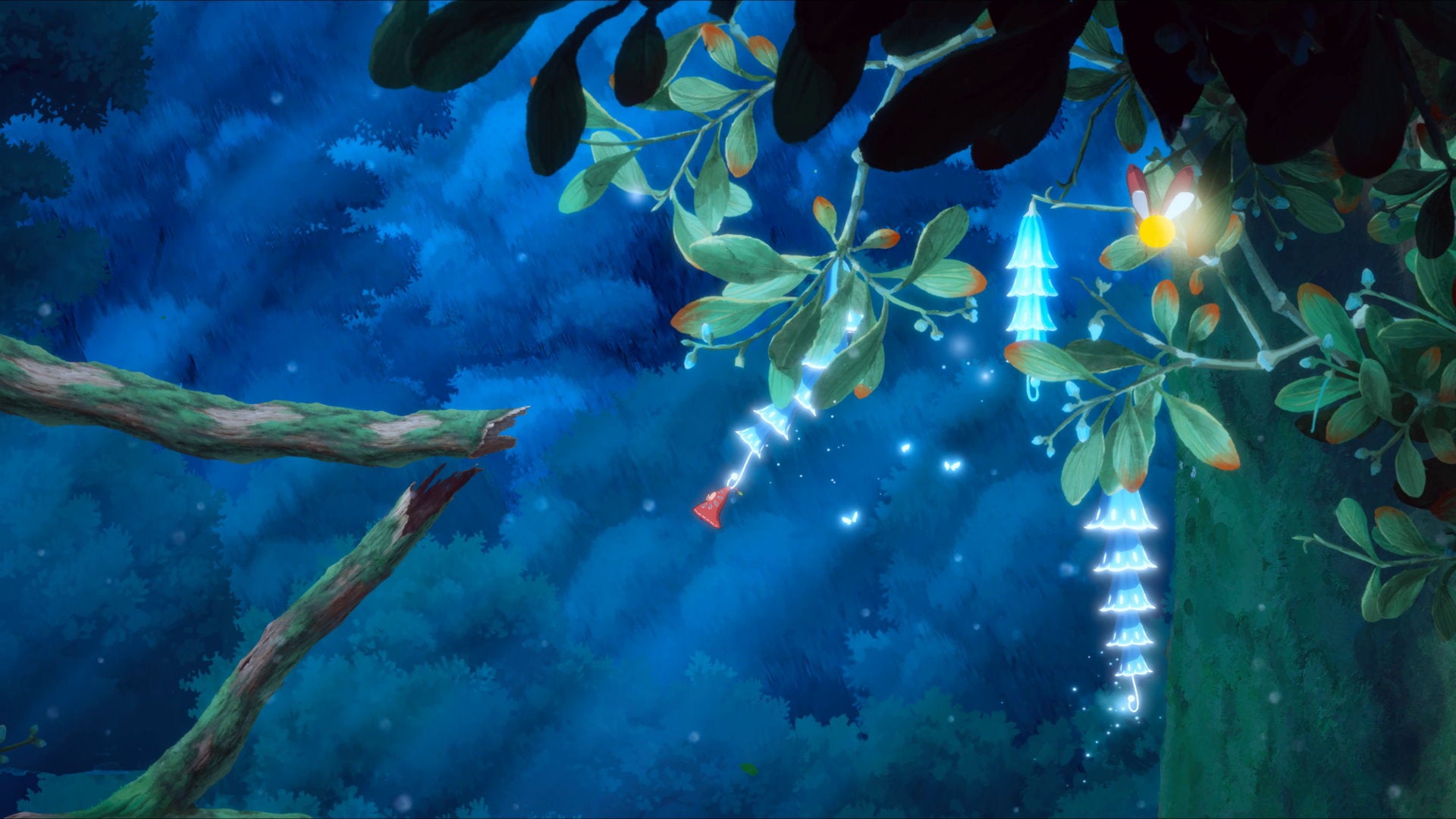
[ad_1]
While Level-5’s pair of Ni No Kuni games lay the biggest claim to being interactive Studio Ghibli movies (the first having actually been made in collaboration with Hayao Miyazaki’s world famous animation studio and the second borrowing a former Ghibli character designer), the Vietnamese-made Hoa comes a very close second. Not only do Skrollcat Studio’s lush, hand-painted visuals look like they’ve been plucked straight from the dewy, sun-dappled forests of My Neighbour Totoro, but you can hear it in the music, too. Johannes Johansson’s sweeping, romantic piano score channels pure Joe Hisaishi goodness for the length of Hoa’s two hour run time, so much so that I was half expecting to see the iconic Studio Ghibli composer’s name in the end credits. He did, after all, lend his musical talents to both Ni No Kuni games.
That Hoa manages to capture both the look and sound of a Studio Ghibli film without any direct involvement from Japan’s illustrious animation house speaks volumes about what Skrollcat Studio have achieved here. The underlying story isn’t quite up there with your Princess Mononokes, Totoros or Spirited Aways, perhaps, but this sweet-tempered tale about returning home, reuniting with old friends and the healing power of nature is still very worth jumping into for an evening’s worth of entertainment – especially if you’re after a non-violent game you can play with your kids.
You play as the titular Hoa, a red, hooded fairy who washes up on a barren beach in nothing but a small little leaf boat. As soon as she touches down, the place – and Johansson’s rich piano-led orchestral score – bursts into life, with grass shooting up underfoot, plants erupting out of the ground, and buzzing bees and dragonflies hoovering in the fore and background. Hoa’s natural ability to heal and restore the world around her becomes the cornerstone of this simple, non-violent adventure. As she ventures further into the forest, simply walking near a slumbering (and weirdly adorable) rhinoceros beetle or springy larvae causes them to stir from their long slumber, and they’re just so gosh-darn happy to see you. The beetles are so thrilled to see you, in fact, that they’ll follow you around, allowing you to jump on their tall backs so you can reach higher ground.

A similar pattern emerges in the other parts of the forest you’ll travel through as well. The larvae act as bounce pads, while the skittish ladybirds function as timed platforms that flit and flutter away from the tree in pleasing, buzzy patterns. Later you’ll encounter cute, cuboid rocks that will levitate when pushed under magical, bioluminescent clusters of dust, wiggling fish and jellyfish you can ride through the watery depths, and giant crabs you can cajole into giving you a lift by simply (and brilliantly) directing their line of sight as you totter from side to side on top of their heads.
It’s simple, but pleasing stuff. Aside from one final stretch of the game, it’s not going to trouble the nimble, acrobatic leaps of seasoned Ori players, nor are the boisterous, but effectively harmless kicking limbs of its equally cute robot antagonists going to appeal to hardened Hollow Knight-ers. But there is something very endearing and winsome about Hoa’s straightforward puzzles, and a large part of that is down to the way it treats your growing set of ability upgrades.

In each part of Hoa’s journey, you often begin by taking advantage of the creatures around you, either by jumping on their backs and clambering over them or, in some cases, clinging to their limbs so they can literally lift you up to get you where you need to be. In lesser hands, this might have been a sweet, but ultimately quite cynical nature fable, whose central message was more about abusing our relationship with the world around us to get what we want instead of really ‘healing’ it. Luckily, Skrollcat Studio deftly sidestep this pitfall by having Hoa learn these powers herself before she goes on to the next area so she doesn’t have to rely on her fellow bug friends again to be on her way. Instead, she can simply carry on with healing these habitats without becoming too much of a burden in the process.
To do this, you’ll need to awaken the area’s resident guardian, an enormous, wisened version of the local wildlife you encounter that really works hard to capture that fantastical Ghibli magic we all know and love. They’re very uniform in their requests – ‘fetch five golden butterflies from the surrounding area and we’ll teach you our special skill,’ sorta thing – but passing on their powers and knowledge like this fits beautifully with the game’s theme of restoration and conservation. This a place where learnings are brought forward and remembered to benefit the forest’s other inhabitants, and ultimately allow Hoa to heal the greatest rift of all – the events that cast her from her island home in the first place.

Some may not agree, arguing that Hoa is more style than substance. But if that is to be Hoa’s fate, then what style! The Ni No Kuni series may look more like Studio Ghibli films-turned-into-games, but Hoa’s pre-occupation with nature, the environment, impossibly cute bugs and robots and heart-swelling piano music makes it a much truer successor to the interactive Ghibli crown in my eyes, possibly more so than anything else I’ve ever played. Much like the moment when troubled monster No Face slips into a steaming hot bath in Spirited Away, Hoa is a balm for both mind and soul in a year like this, at once a deep, soothing snuggle into Totoro’s furry belly and a triumphant run across the raging waves with Ponyo. It may not have the bite of Princess Mononoke’s wolf queen Moro or the nostalgic poignancy of an Only Yesterday, perhaps, but this is nevertheless a promising first outing from Skrollcat Studio, and marks them out as ones to watch going forward.
[ad_2]





